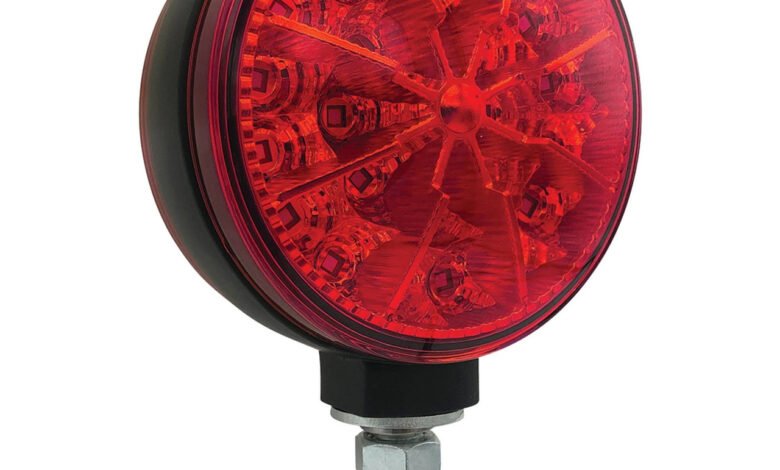Red and Amber LEDs: Your Complete Guide to Color Choice

Introduction
Light-emitting diodes have transformed how we illuminate our world, but choosing the right color for your specific needs can make all the difference. Red and amber LEDs stand out as two of the most versatile and widely-used options in modern lighting applications.
These colored LEDs offer distinct advantages depending on your requirements. Red LEDs deliver exceptional visibility and energy efficiency, making them ideal for indicators, automotive applications, and specialized lighting. Amber LEDs provide a warm, inviting glow while maintaining excellent visibility in various conditions.
Understanding the unique properties, applications, and benefits of each color will help you make an informed decision for your lighting project. From traffic signals to decorative installations, the choice between red and amber can significantly impact performance, aesthetics, and functionality.
The Science Behind LED Colors
LED colors result from the specific semiconductor materials used in their construction. The wavelength of light emitted depends on the energy gap between electrons in these materials, creating distinct colors we perceive.
Red LEDs typically emit light at wavelengths between 620-750 nanometers. Most commonly manufactured red LEDs produce light around 660 nanometers, creating the bright red color we associate with stop signs and warning indicators. The semiconductor materials used include aluminum gallium arsenide (AlGaAs) or gallium arsenide phosphide (GaAsP).
Amber LEDs operate at wavelengths between 585-595 nanometers, positioned between yellow and orange on the visible light spectrum. These LEDs often use aluminum gallium indium phosphide (AlGaInP) as their primary semiconductor material. The specific wavelength determines whether the amber appears more yellow or orange to the human eye.
The manufacturing process involves precise control of material composition and crystal structure. Small changes in these factors can shift the color output, which explains why you might notice slight variations between different manufacturers or LED batches.
Applications of Red LEDs
Red LEDs excel in applications where visibility and instant recognition are crucial. Their long wavelength penetrates atmospheric conditions better than shorter wavelengths, making them ideal for outdoor use.
Automotive Applications
Brake lights, tail lights, and turn signals rely heavily on red LEDs. The automotive industry has embraced LED technology for its durability, quick response time, and energy efficiency. Red LEDs illuminate almost instantly, providing crucial milliseconds of additional reaction time for following drivers.
Safety and Emergency Equipment
Emergency vehicles, warning beacons, and safety equipment frequently use red LEDs. The color red universally signals danger or urgency, making these LEDs essential for first responders and industrial safety applications.
Electronic Indicators
Power indicators, status lights, and error signals commonly use red LEDs. Their bright, focused light makes them perfect for control panels, electronic devices, and industrial equipment where clear status indication is necessary.
Horticultural Lighting
Red LEDs play a vital role in plant growth lighting. Plants absorb red light efficiently for photosynthesis, particularly in the 660-670 nanometer range. Many commercial grow lights incorporate red LEDs to promote flowering and fruiting.
Applications of Amber LEDs
Amber LEDs provide excellent visibility while offering a warmer, less harsh appearance than pure red or white light. This makes them suitable for applications requiring both functionality and aesthetic appeal.
Traffic and Road Safety
Construction zones, school zones, and traffic control devices frequently use amber LEDs. The color amber signals caution without the urgency of red, making it perfect for warning drivers about changing conditions or temporary hazards.
Architectural and Decorative Lighting
Amber LEDs create warm, inviting atmospheres in restaurants, hotels, and residential spaces. Their color temperature resembles traditional incandescent bulbs, providing familiar, comfortable lighting that many people prefer for relaxation areas.
Marine and Aviation Applications
Navigation lights on boats and aircraft use amber LEDs for specific positioning indicators. The distinct color helps pilots and mariners identify vessel orientation and movement patterns in low-visibility conditions.
Industrial Equipment
Machinery status indicators, process monitoring systems, and industrial automation equipment use amber LEDs to signal operational states that require attention but not immediate action. The color provides clear visibility without creating alarm.
Comparison of Red and Amber LEDs
Several factors distinguish red and amber LEDs beyond their obvious color difference. Understanding these distinctions helps determine which option suits your specific requirements.
Visibility and Human Perception
The human eye perceives these colors differently under various conditions. Red light maintains visibility in foggy or smoky conditions due to its longer wavelength. Amber light appears brighter to the human eye at equal power levels because our eyes are more sensitive to wavelengths in the amber range.
Power Consumption
Both red and amber LEDs offer excellent energy efficiency compared to traditional lighting. Red LEDs typically consume slightly less power due to their lower forward voltage requirements. However, the difference is usually minimal in practical applications.
Cost Considerations
Red LEDs generally cost less than amber LEDs due to simpler manufacturing processes and higher production volumes. The price difference has decreased over time, but red LEDs remain the more economical choice for large-scale applications.
Longevity and Durability
Both colors offer excellent lifespan characteristics, typically lasting 50,000 hours or more under proper operating conditions. Environmental factors like temperature and humidity affect both colors similarly, with proper heat management being crucial for optimal lifespan.
Benefits of Using Red LEDs
Red LEDs offer numerous advantages that make them the preferred choice for many applications. Their unique characteristics provide both practical and economic benefits.
Superior Weather Penetration
Red light’s longer wavelength cuts through fog, rain, and atmospheric haze better than shorter wavelengths. This makes red LEDs invaluable for outdoor applications where visibility during adverse weather conditions is critical.
Instant Recognition
The color red triggers immediate recognition as a warning or stop signal across cultures. This universal understanding makes red LEDs essential for safety applications where instant comprehension can prevent accidents or injuries.
Energy Efficiency
Red LEDs convert electrical energy to light very efficiently, with minimal heat generation. This efficiency translates to lower operating costs and reduced cooling requirements in large installations.
Design Flexibility
Available in various form factors, beam angles, and intensities, red LEDs adapt to diverse design requirements. From tiny indicator lights to high-power arrays, red LEDs scale effectively across applications.
Benefits of Using Amber LEDs
Amber LEDs provide distinct advantages that make them ideal for specific applications where their unique characteristics shine.
Reduced Eye Strain
Amber light is gentler on human eyes, particularly during extended exposure periods. This makes amber LEDs excellent for applications where people work or spend significant time near the light source.
Aesthetic Appeal
The warm color temperature of amber LEDs creates inviting, comfortable environments. This aesthetic quality makes them popular for hospitality, residential, and retail applications where ambiance matters.
Night Vision Preservation
Amber light has less impact on night vision adaptation compared to white or blue light. This characteristic makes amber LEDs valuable for applications where maintaining night vision is important, such as astronomy or night operations.
Insect Attraction Reduction
Many insects are less attracted to amber light compared to white or blue light. This property makes amber LEDs useful for outdoor applications where reducing insect activity is beneficial.
Future Trends in LED Technology
LED technology continues advancing rapidly, with improvements in efficiency, color quality, and smart capabilities. Both red and amber LEDs benefit from these technological developments.
Smart Integration
Future LEDs will integrate more seamlessly with smart building systems and IoT networks. This connectivity will enable remote monitoring, predictive maintenance, and automated adjustment based on environmental conditions.
Improved Color Quality
Advanced manufacturing techniques are producing LEDs with more precise color output and better consistency between units. This improvement reduces color variation in large installations and ensures reliable color reproduction.
Enhanced Efficiency
Ongoing research in semiconductor materials and LED design continues improving energy efficiency. Next-generation LEDs will deliver even better performance while consuming less power.
Frequently Asked Questions
Which color is more visible in fog: red or amber?
Red LEDs typically perform better in fog due to their longer wavelength, which penetrates atmospheric particles more effectively than amber light.
Do red or amber LEDs last longer?
Both colors offer similar lifespan characteristics when operated under proper conditions. Environmental factors and operating temperature have more impact on longevity than color choice.
Are amber LEDs more expensive than red LEDs?
Generally, amber LEDs cost slightly more than red LEDs due to manufacturing complexity, but the price difference has decreased significantly in recent years.
Can I replace incandescent bulbs with red or amber LEDs directly?
Most applications allow direct replacement, but check voltage requirements and form factors. LED versions typically require less power and generate less heat than incandescent alternatives.
Which color is better for plant growth applications?
Red LEDs are more effective for plant growth, particularly in promoting flowering and fruiting stages. Many horticultural applications combine red with blue LEDs for optimal plant development.
Making the Right Choice for Your Application
Selecting between red and amber LEDs depends on your specific requirements, environmental conditions, and aesthetic preferences. Red LEDs excel in applications demanding maximum visibility, weather penetration, and instant recognition. They represent the most cost-effective choice for safety, automotive, and indicator applications.
Amber LEDs shine in applications where warm aesthetics, reduced eye strain, and gentle illumination are priorities. They work exceptionally well in hospitality, residential, and decorative applications where creating the right atmosphere matters as much as functionality.
Consider your primary objectives, operating environment, and long-term maintenance requirements when making your selection. Both options offer excellent performance and reliability when properly specified and installed.



